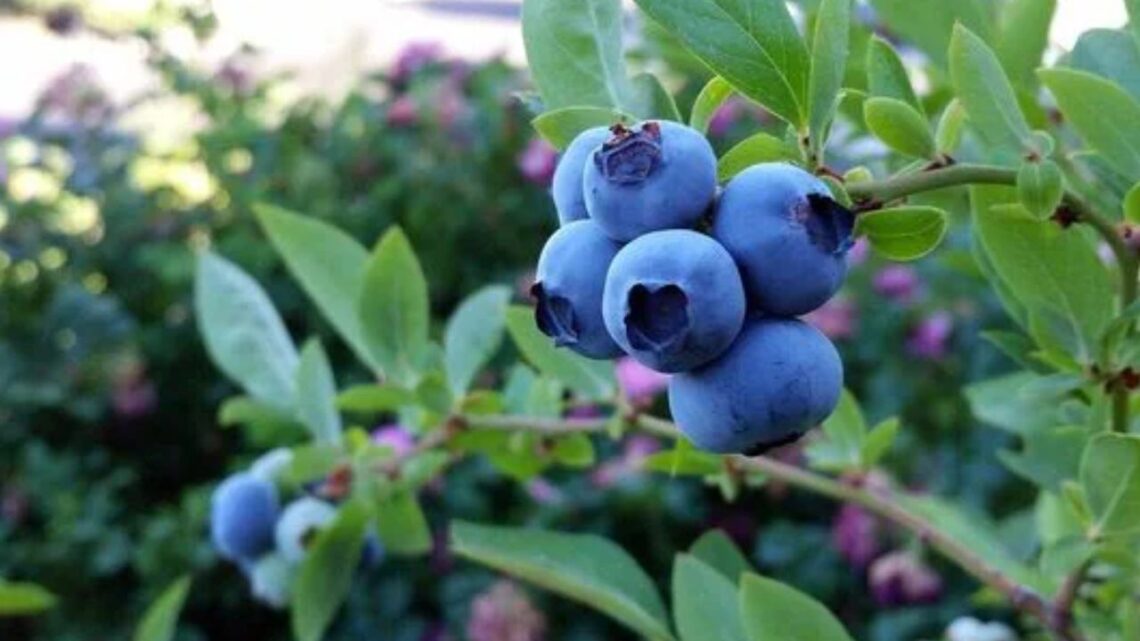The much-heralded Peruvian blueberry boom is showing signs of strain. As export volumes soar and prices decline sharply, the industry is confronting the harsh reality of oversupply, market saturation, and intensifying competition.
Peru’s growers and exporters now face a critical inflection point: scale no longer guarantees profit. Below, we delve into the numbers, pressures, strategies, and future outlook for this sector.
The Boom That Backfired: Volume vs. Value
The global blueberry trade is currently estimated at around USD 7 billion annually. But as Peru’s production enters overdrive, the balance between supply and demand is shifting dramatically.
In the 2025/26 season, Peru’s blueberry production is projected to hit 355,000 metric tons, with exports estimating at 335,000 MT.¹
The export boom began with the May start of the season: from May to August 2025, Peru shipped 71,957 metric tons — a 137 % increase over the same period last year. Despite this surge, the export value rose only by 44 %, signaling an average price drop.²
In July 2025, the export price averaged USD 5.60/kg, which was 38 % lower than July 2024. In August, the average price fell further to USD 5.95/kg, marking a 41 % year-on-year decline.²
These figures show how rapidly oversupply is eroding margins. Even as Peru floods traditional markets, demand cannot keep pace.
Key Export & Price Metrics
| Metric / Indicator | 2025 / Period | Year-on-Year Change / Note |
|---|---|---|
| Export volume May–Aug | 71,957 metric tons | +137 % vs same period last year |
| Export value growth (May–Aug) | +44 % | Lower than volume growth |
| Average export price (July 2025) | USD 5.60/kg | −38 % vs July 2024 |
| Average export price (August 2025) | USD 5.95/kg | −41 % vs August 2024 |
| Projected export volume 2025 full season | > 400,000 metric tons | +25 % over prior year |
| Projected export value growth 2025 | +8–13 % | Much lower than volume growth |
Why Prices Are Crashing
1. Outpacing Market Absorption
The rapid expansion of Peruvian blueberry supply has exceeded what traditional markets — notably the United States and Europe — can absorb. These markets are showing signs of saturation, forcing buyers to push prices down.
2. Rising Global Competition
Countries like Mexico, Morocco, and South Africa are escalating production and targeting the same export destinations. Their presence intensifies downward price pressure and weakens Peru’s pricing power.
3. Logistics & Infrastructure Constraints
Congestion at the Port of Callao and delays in shipping are causing fruit to lose freshness and quality, which further diminishes its market value. During peak production weeks (e.g. week 42), shipments exceeding 20,000 metric tons may overwhelm logistics systems, leading to spoilage or delayed delivery.
4. Tariffs & Trade Disruptions
Recently, U.S. tariffs of around 10 % on Peruvian goods have threatened export competitiveness. To hedge against this, Peru is pivoting toward Asia, especially China, and leveraging the new Chancay port to reduce sea transit times.³
5. Price-Quality Gap & Consumer Preferences
The 2025 Price Quality Index (PQI) shows that premium varieties command substantial price premiums over standard varieties. Producers lacking varietal differentiation are being squeezed hardest.⁴
Strategic Responses: What Peru Must Do Differently
1. Market Diversification
With traditional markets stretched, Peru must expand into Asia, Southeast Asia, Middle East, and new emerging markets. China, in particular, shows strong demand for large, premium blueberries.³
2. Varietal Innovation & Differentiation
Growers are accelerating adoption of higher-value cultivars (e.g. Sekoya Pop, Eureka) known for firmness, flavor, and shelf life. The PQI reveals premium lines fetching USD 1.34/kg above market average in some cases.⁴
3. Improved Logistics & Infrastructure
Upgrading port capacity, cold chain networks, and inland transport can reduce postharvest losses. The Chancay port, by cutting transit time to Asia, could be a game changer for freshness preservation.³
4. Strategic Scale Control
Peru must transition from uncontrolled volume expansion to measured growth that aligns with demand. Overexpansion may harm the sector’s long-term viability.
5. Value-Added Products & Diversification
Shifting toward premium packaged goods, frozen products, blueberry extracts, and derivatives can help buffer against raw fruit price drops.
Challenges That Lurk
- If producers fail to adapt quickly, many may be priced out of the market.
- Varietal switching requires capital, research, and transitional yield drops — a risk for smaller producers.
- Logistics bottlenecks and infrastructure investments often lag behind industry growth, creating persistent friction.
- New market development is slow and carries regulatory, tariff, and consumer preference risks.
- Coordinating the sector toward common strategies may be hard in a fragmented export ecosystem.
What Happens Next
If the industry holds course, by end-2025 Peru’s blueberry exports could exceed 400,000 metric tons, but the value increase may be limited to 8–13 %, weighed down by the price slide.¹
The battle will pivot on who can add the most value per unit rather than just who sells the most units. Quality, speed, innovation, and market reach will determine which producers survive and which will be squeezed out.
Peru’s blueberry industry finds itself at a delicate crossroads. After years of rapid expansion and lofty returns, the sector now confronts a glut, cratered prices, and the narrowing window for correction.
Moving forward, differentiation, market agility, and infrastructure efficiency are no longer optional — they are essential. The shift from volume-centric growth to value-centric resilience could define the next decade for Peru’s fruit export landscape.









